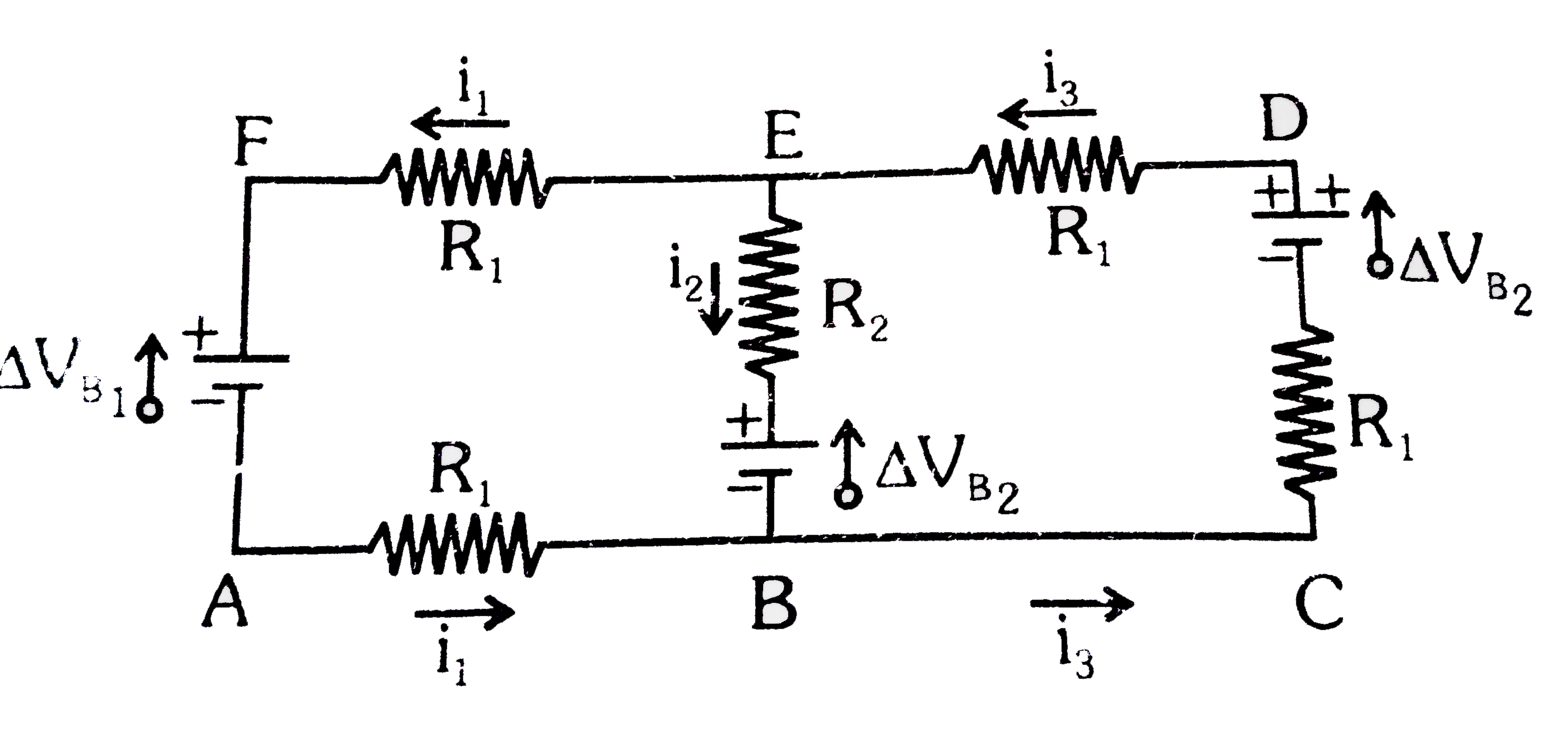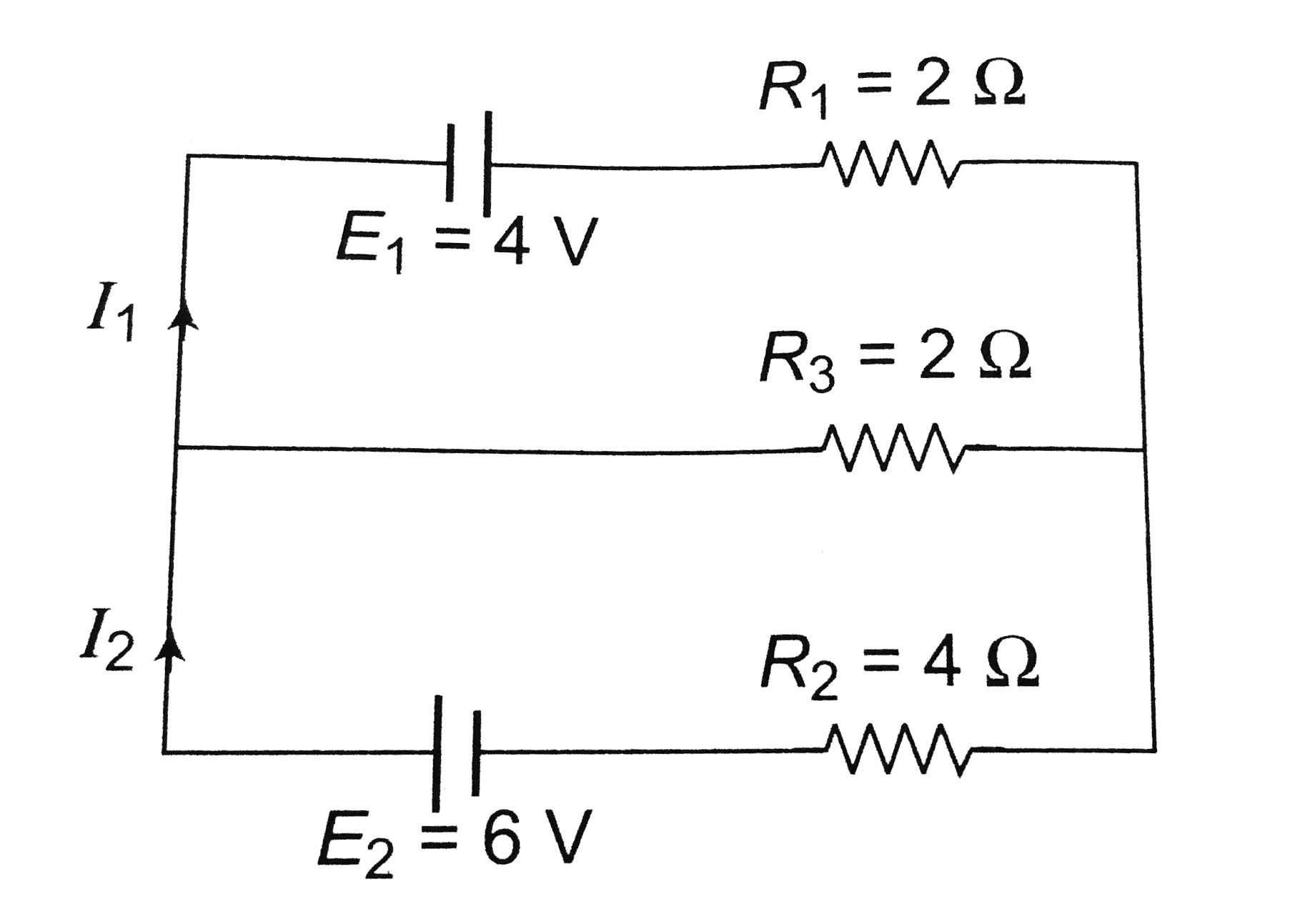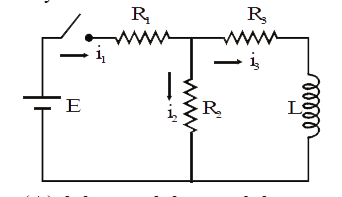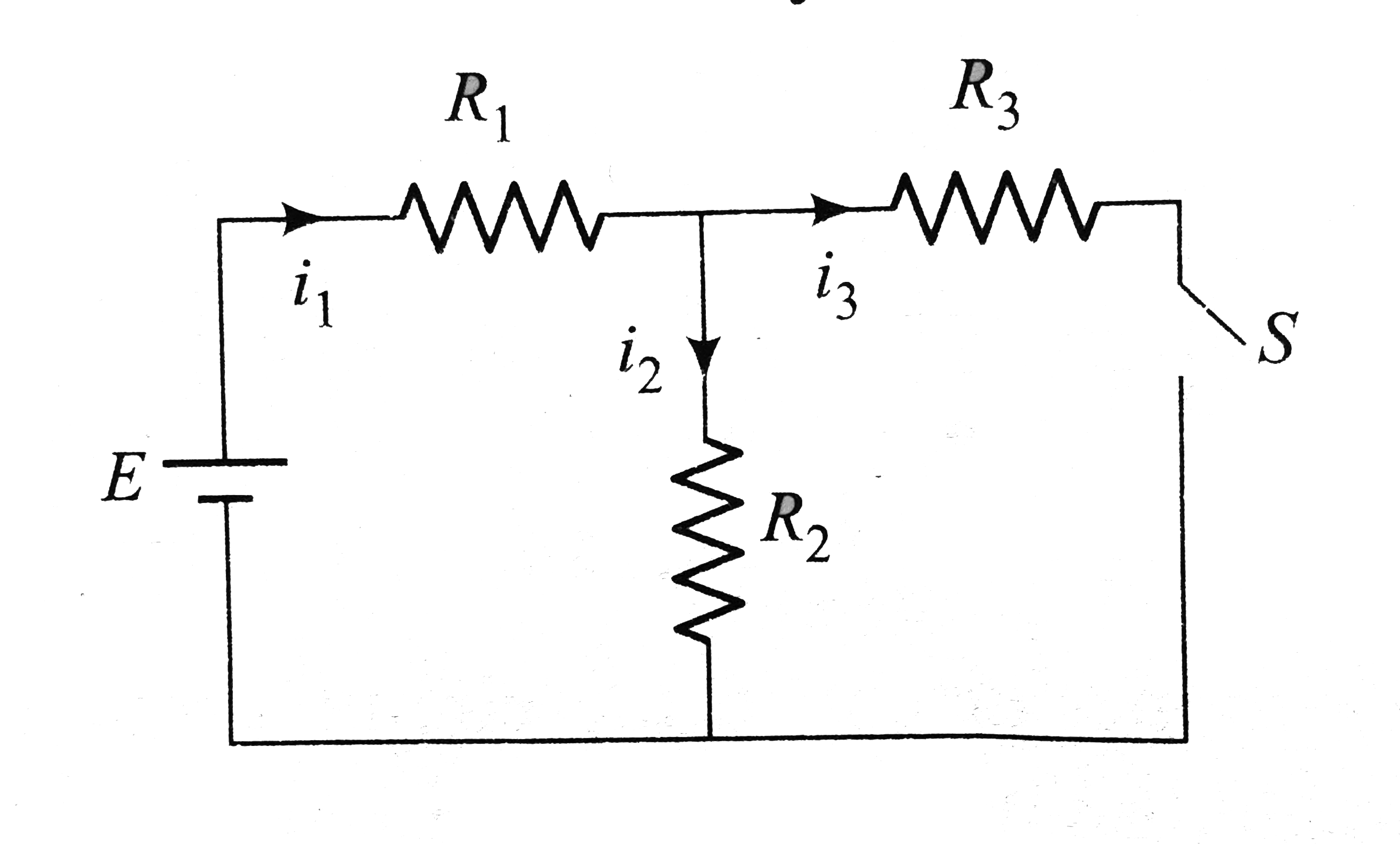Figure shows a circuit with three ideal batteries in it. The circuit elements h ave the following values

ΔVB1=3.0V,ΔVB2=6.0V
R1=2.0Ω,R2=4.0Ω The currents i1,i2 and i3 as shown in the circuit have the values.
0.50A,-0.25A,+0.25A
0.25A,-0.50A,-0.25A
0.50A,0.50A,1.0A
−0.25A,0.50A,0.25A
The correct Answer is:1

Applying kirchhoff's first law at junction E, we g-t
i3=i1+i2
Applying kirchhoff's second law for the closed loop
ABEFA, we get
−i1R1+ΔVB2+i2R2−i1R1−ΔVB1=0
−2i1R1+i2R2+ΔVB2=ΔVb1=0
−2i1(2)i2(4)+6−3=0
−4i1+4i2+3=0
−4i1+4i2=−3
Again, applying kirchhoff's second for the closed loop BCDEB, we get
i3R1+ΔVB2−i3R1−i2R2−ΔVB2=0
−2i3R1−i2R2=0
−2i3(2)−i2(4)=0
ri3+4i2=i3+i2=0
Solving (i),(ii) and (iii), we get
i1=0.50∀,i2=−0.25A,i3=0.25A
Topper's Solved these Questions
Similar Questions
Figure 27-12 shows a circuit whose elements have the following values: ε1=3.0V,ε2=6.0V,R1=2.0ΩR2=2.0Ω. The three batteries are ideal batteries. Find the magnitude and direction of the current in each of the three branches
View SolutionIn the following circuit ,E1=4V,R1=2Ω,
E2=6V,R2=2Oemga,andR3=4Ω. Find the currents i1andi2

View Solution
Knowledge Check
In the circuit shown below E1=4.0V,R1=2Ω,E2=6.0V,R2=4Ω and R3=2Ω. The current I1 is
 A1.6AB1.8AC1.25AD1.0A
A1.6AB1.8AC1.25AD1.0AIn the circuit shown in adjoining fig E =10V, R1=1ΩR2=2Ω,R3=3ΩandL=2H. Calculate the value of current i1,i2andi3 immidiately after key S is closed :-
 A3.3 amp, 3.3 amp, 3.3 ampB3.3 amp, 3.3 amp, 0 ampC3.3 amp, 0 amp, 0 ampD3.3 amp , 3.3 amp 1.1 amp
A3.3 amp, 3.3 amp, 3.3 ampB3.3 amp, 3.3 amp, 0 ampC3.3 amp, 0 amp, 0 ampD3.3 amp , 3.3 amp 1.1 ampIn the circuit shows in Fig E=15V, R1=1Ω, R2=1Ω, R3=2Ω, and L=1.5H. The currents flowing through R1,R2,and R3 are i1,i2, and i3, respectively.

After the circuit reaches the steady state,Ai1=9A, i2=6A, i3=3ABi1=9A, i2=3A, i3=6ACi1=6A, i2=6A, i3=0ADi1=0A, i2=0A, i3=0A
Figure 27-11a shows a multiloop circuit containing one ideal battery and four resistances with the following values:
R1=20Ω,R2=20Ω,ε=12V,
R3=30Ω,R4=8.0Ω
(a) What is the current through the battery?
(b) What is the current i2 through R2?
(c) What is the current i3 through R3?
View Solution
In the given circuit values are as follows
ε=2V,ε2=4V,R1=1Ω and R2=R3=1Ω.
Calculate the current through R1,R2 and R3
View SolutionThe emf and resistances in the circuit of Fig 27-8a have the following values:
ε1=4.4V.ε2=2.1V,
r1=2.3Ω,r2=1.8Ω,R=5.5Ω
(a) What is the current I in the circuit?
(b) What is the potential difference between the terminals of battery 1 in Fig. 27 8a?
View Solution
In the circuit shown in figure. ε1=3,ε2=2,ε3=6V,R1=2,R4=6Ω,R3=2,R2=4ΩandC=5μF. Find the current in the resistor R3 and the electrical energy stored in the capacitor C.
View SolutionConsider the circuit shown in the figure. If E=20V , R1=4Ω , R2=12Ω and L=5H . Find current i , i1 , i2 , P.d. across R2 and L
(a) just after closing the switch (t=0)
(b) after a long time (t=∞)

View Solution

